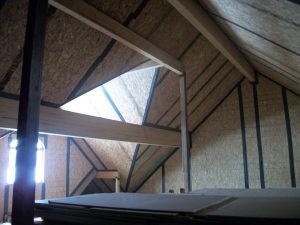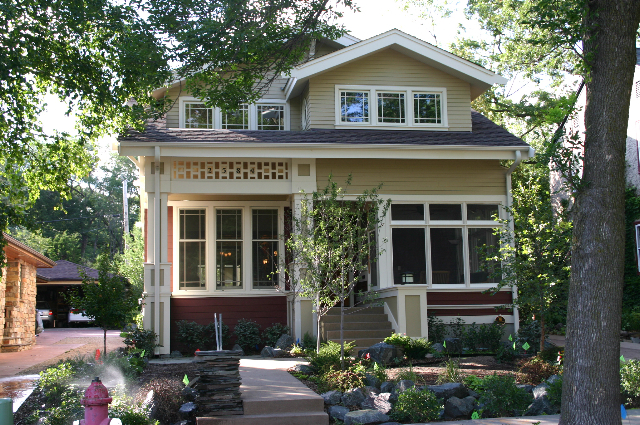Almost overnight, the home has become an all-encompassing safe haven for American families to work, play, eat and sleep. The additional time spent indoors has encouraged many homeowners to turn their focus towards the interior of their home, from tackling DIY projects to deep cleaning room-by-room. And while homes may be tidier than ever, how clean is the air we’re breathing in? The mounting issue of indoor air quality (IAQ) has perhaps never been more top-of-mind.
 While short-term solutions such as air purifier purchases are on the rise, homeowners and builders are craving long-term solutions to better support IAQ. At Extreme Panel we believe the solution is found during construction, with the utilization of structural insulated panels (SIPs). Perhaps to the surprise of some builders and homeowners – SIPs can increase IAQ through the reduction of common indoor pollutants and improved autonomy over mechanical ventilation.
While short-term solutions such as air purifier purchases are on the rise, homeowners and builders are craving long-term solutions to better support IAQ. At Extreme Panel we believe the solution is found during construction, with the utilization of structural insulated panels (SIPs). Perhaps to the surprise of some builders and homeowners – SIPs can increase IAQ through the reduction of common indoor pollutants and improved autonomy over mechanical ventilation.
So, can building a SIP House contribute to better IAQ? In short: yes. Read along as we explain how the composition of SIPs and their compact nature lend to healthier IAQ levels within a home.
SIP houses are less likely to emit pollutants
Extreme Panel ensures healthier IAQ levels by engineering SIP components which do not contain volatile organic compound (VOCs) that can be detrimental to occupant health. Each component of the panel adheres to stringent requirements, meaning that the rigid foam insulation, oriented strand board (OSB) and adhesive all meet leading emission standards, including the U.S. HUD Manufactured Housing Standard, the California Air Resources Board (CARB) Air Toxic Control Measure for Composite Wood Products, and the European EN-300 Standard. In satisfying these requirements, SIP houses again prove their effectiveness in elevating IAQ levels for healthier indoor work and play.
SIP houses provide owner autonomy over mechanical ventilation.
Builders can allow occupants complete control over a building’s mechanical ventilation by constructing virtually airtight building envelopes. Tight building envelopes are achieved by utilizing SIP walls and roofs, which can be manufactured in large sizes (up to 8-feet x 24-feet), resulting in fewer air gaps, and reduced thermal bridging from fewer lumber connections. In fact, when the Department of Energy’s Oak Ridge National Laboratory (ORNL) compared a SIP building with a stick framed building, the laboratory found the SIP structure was 14 times more airtight. Thanks to its airtight nature, the occupant of a SIP house will have complete control over air movement within the structure, power typically afforded by mechanical ventilation. A mechanical ventilation system takes expended air, dilutes it, and then redistributes for a fresher, cleaner interior atmosphere. This works to minimize the accumulation of dangerous carbon monoxide, insecticides, and other substances harmful to human health.
SIP houses’ composition & mechanical ventilation combine to stop mold in its tracks.
The clean nature of SIP components, combined with the ability they afford occupants to rely completely on mechanical ventilation, significantly reduce the risk of mold growth within a structure. Mold growth is a very common concern associated with stick frame structures and has been linked to aggravating respiratory issues, such as asthma. In a stick frame wall, there is a cavity in which warm, moist air from inside the home meets with a cold exterior wall. The clashing of the two airstreams creates the perfect recipe for condensation, which will eventually lead to mold growth. Extreme Panel address this common problem by laminating the insulation and OSB together, eliminating any cavity within the wall frame in which moisture could sit. Mechanical ventilation in a properly engineered SIP house has proven effective in not only providing increased control over airflow, but it also allows incoming air to be dehumidified, which further reduces the risk of mold growth.
Due to their safely engineered components and nearly air impermeable envelope, builders and homeowners can rest easy knowing SIPs can provide healthier indoor air quality for occupants.
Interested in learning more? Our website offers more resources on the topic of improving IAQ, such as our technical bulletin on the Mechanical Ventilation of SIP Structures.


